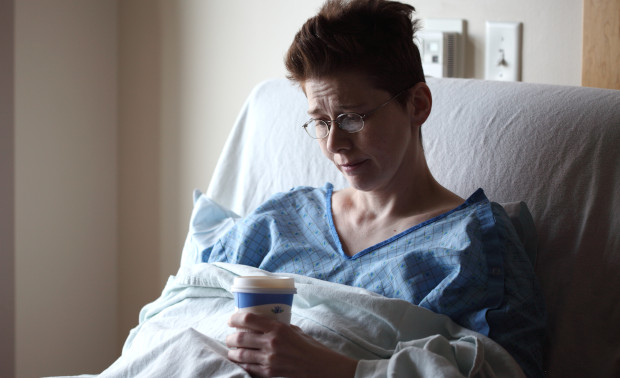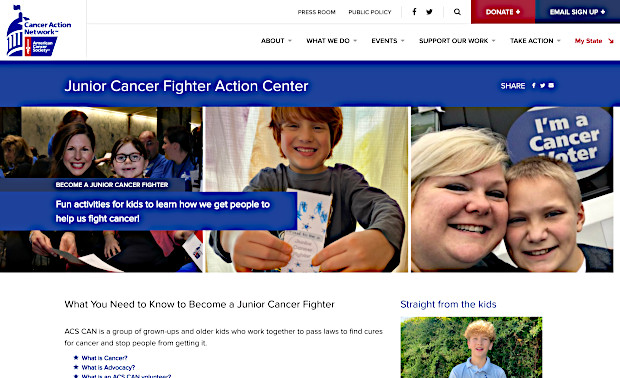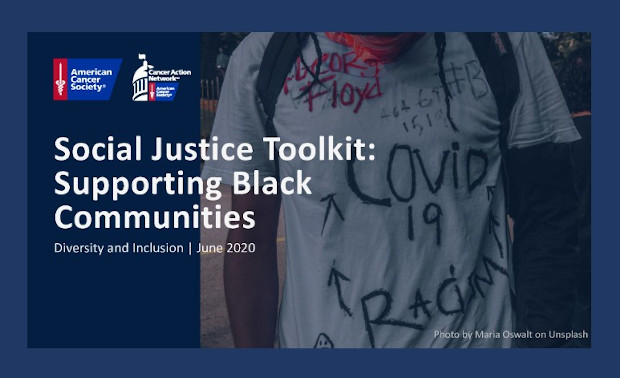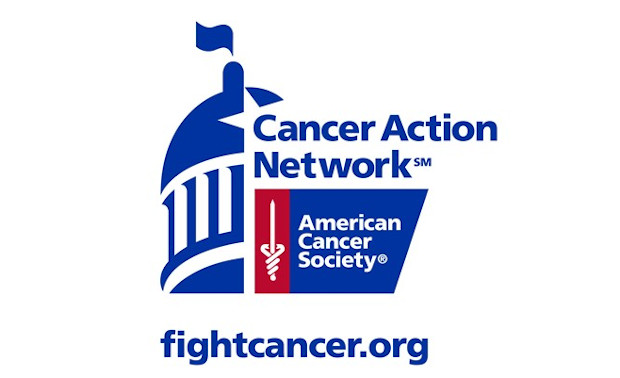Today is #SocialMediaDay! Thank you to all
of our amazing Relay For Life Social Media Volunteers! If you are interested in
volunteering
as part of your Relay’s Online or Social Media team contact your staff
partner or event lead for more information.
Tuesday, June 30, 2020
Social Media Day
Monday, June 29, 2020
An exciting digital
campaign and dynamic virtual experience is coming to ACS July 16th through
October!
Share the Light is designed to engage survivors, caregivers, health conscious
individuals, as well as existing donors and volunteers in a fundraising season
of light. Together we must illuminate the critical need to increase our funding
to fight cancer through new and existing revenue channels.
Save July 16 at 7 p.m. ET for an hour-long kickoff of
entertainment and inspiration! The July 16 kickoff will feature
a diverse array of celebrities, special guests, moving stories and an
illumination moment you won’t want to miss. You’ll also hear ideas on how to
carry your own light forward to advance and accelerate the fight through
existing ACS events, via virtual fitness challenges, or in ways unique to you.
What you can do RIGHT NOW: Help create that July 16
illumination moment! We need our volunteers, community partners, and staff
to to create videos/images:
1. Simply create a
video or snap a photo sharing a light in any way you’d like.
· Examples:
lighting a candle, turning on your mobile phone light
2. Post the
video/image to your social media channels using #sharethelight and tag
family members, friends, or co-workers, and encourage them to do the same
· Sample Post: I
am helping illuminate the critical need to increase funding for the cancer
fight. I challenge (tag your friends/family) to do the same. #sharethelight
3. Check out examples
of the types of videos/images we’re looking for here:
· https://www.facebook.com/ACSOklahoma/videos/2898600716863872/
4. Be on the
lookout for more details. Thank you for joining this effort and shining a light
on this urgent, life-saving need.
Learn more about the campaign and the upcoming virtual
experience here, on Society Source
and be on the lookout for the full suite of materials on the Brand Toolkit.
Sunday, June 28, 2020
Saturday, June 27, 2020
Thursday, June 25, 2020
ACS study links financial hardship with more ER room visits and less preventive care
Authors say greater patient cost sharing and the high cost of care may lead to greater health disparities
A new American Cancer Society study finds higher medical and nonmedical financial hardships are independently associated with more emergency department visits, lower receipt of some preventive services, and worse self-rated health in cancer survivors.

The authors say as healthcare costs grow, unmet medical and nonmedical financial needs may worsen health disparities among cancer survivors. The study appears in the American Journal of Preventive Medicine.
More than half of Americans experience medical financial hardship at some point in their lives. Cancer survivors are particularly vulnerable, being more likely to face material (e.g., problems paying medical bills), psychological (e.g., worry about medical costs), and behavioral (e.g., delaying or forgoing care because of cost) financial hardships than individuals without a cancer history. Cancer survivors also face non-medical financial hardship, including food insecurity and worry about other economic needs (e.g., monthly bills and housing expenses), likely due to the late and lasting effects of cancer-related treatments, work limitations or inability to work, leading to reduced earnings and loss of employer-sponsored health insurance coverage. There has been little research to evaluate whether these medical and nonmedical financial hardships of cancer can impact the use of preventive services.
To learn more, investigators led by Zhiyuan “Jason” Zheng, PhD, looked at responses from about 12,000 cancer survivors in the National Health Interview Survey (2013–2017), stratifying survivors into two age groups (18–64 years and ≥65 years). They found cancer survivors with higher medical and nonmedical financial hardship intensities were consistently more likely to report any emergency room visit and rated their health status worse than those with lower hardship intensities. Those with the highest level of hardship intensity also had lower levels of influenza vaccination (ages 18 to 64: 45.6% vs 52.5%; ages 65 and up: 64.6% vs 75.6%) and breast cancer screening (46.8% vs 61.2%).
“Given greater patient cost sharing and rapid development of expensive cancer treatments, the experience of medical and nonmedical financial hardship is likely to increase and may exacerbate cancer-related health disparities,” write the authors.
*Shared from MySocietySource.
Wednesday, June 24, 2020
Alcohol use and cancer; ACS says it's best not to drink
We've heard it before, but the recent release of our new Guideline for Diet and Physical Activity for Cancer Prevention, underscores the hard reality: you'll be healthier if you abstain from alcohol.
Alcohol use is one of the most important preventable risk factors for cancer, along with tobacco use and excess body weight. Alcohol use accounts for about 6% of all cancers and 4% of all cancer deaths in the U.S.

The more alcohol you drink, the higher your cancer risk. But for some types of cancer, most notably breast cancer, consuming even small amounts of alcohol can increase risk. Alcohol can raise estrogen levels in the body.
Drinking and smoking together raises the risk of these cancers many times more than drinking or smoking alone. This might be because alcohol can help harmful chemicals in tobacco get inside the cells that line the mouth, throat, and esophagus. Alcohol may also limit how these cells can repair damage to their DNA caused by the chemicals in tobacco.
Ethanol is the type of alcohol found in alcoholic drinks, and most evidence suggests that it is the ethanol that increases the risk, not other things in the drink. Alcoholic drinks contain different percentages of ethanol, but in general, a standard size drink of any type — 12 ounces of beer, 5 ounces of wine, or 1.5 ounces of 80-proof liquor — contains about the same amount of ethanol (about half an ounce). Of course, larger or ‘stronger’ drinks can contain more ethanol than this.
Overall, the amount of alcohol someone drinks over time, not the type of alcoholic beverage, seems to be the most important factor in raising cancer risk.
Once in the body, alcohol can be converted into acetaldehyde, a chemical that can damage the DNA inside cells and has been shown to cause cancer in lab animals.
Drinking alcohol can also lead to oxidative stress in cells, causing them to create more reactive oxygen species (chemically reactive molecules that contain oxygen). These can lead to damage inside the cells that might increase the risk of cancer.
Alcohol and its byproducts can also damage the liver, leading to inflammation and scarring (cirrhosis). As liver cells try to repair the damage, they can end up with mistakes in their DNA, which could lead to cancer.
Alcohol might also affect the body’s ability to absorb some nutrients, such as folate. Folate is a vitamin that cells in the body need to stay healthy. Absorption of nutrients can be even worse in heavy drinkers, who often consume low levels of folate to begin with. Low folate levels may play a role in the risk of some cancers, such as breast and colorectal cancer.
What does the American Cancer Society recommend?
Simply, our new guideline says it is best not to drink alcohol. People who choose to drink alcohol should limit their intake to no more than 2 drinks per day for men and 1 drink a day for women.
The recommended limit is lower for women because of their smaller body size and because their bodies tend to break down alcohol more slowly.
Who drinks?
In 2016, approximately 50.7% of the U.S. population aged age 12 and over reported having consumed alcohol in the past 30 days.
For both men and women, the prevalence of alcohol abstinence is higher among Hispanics, African Americans, Asians, and Native Americans than among non-Hispanic whites. Among current drinkers, the prevalence of heavy weekly drinking is highest among Native Americans, and the prevalence of heavy daily drinking is highest among Hispanic men.
How much damage does alcohol actually do?
It was recently estimated that in 2014, alcoholic beverage consumption caused 5.6% of all incident cancer cases and 4% of all cancer deaths among males and females in the U.S., an estimated:
- 40.9% of oral cavity/pharynx cancers
- 23.2% of larynx cancers
- 21.6% of liver cancers
- 21% of esophageal cancers
- 12.8% of colorectal cancers
- 16.4% of all breast cancers among women
Sadly, our new guideline notes that public knowledge of the link between alcohol and cancer is low.
*Shared from MySocietySource.
Tuesday, June 23, 2020
National Pink Day
On #NationalPinkDay, we want to let you know about the American Cancer Society’s Making Strides Against Breast Cancer walks to unite communities in the fight against breast cancer. Learn more and support our local Making Strides Against Breast Cancer of Silicon Valley.
Monday, June 22, 2020
ACS CAN's new Junior Cancer Fighter Action Center teaches kids the power of advocacy
With the school year ending and many summer camps and activities being cancelled due to the Covid-19 pandemic, the American Cancer Society Cancer Action Network (ACS CAN) is helping to fill the gap with the launch of a new online action center for kids.
Located on ACS CAN’s website, the Junior Cancer Fighter Action Center provides elementary and middle school-age children and their parents, grandparents, and loved ones with a series of fun and educational activities to help them learn about advocacy, fighting cancer, and ACS CAN. It features videos, advocacy opportunities, and fun activities that kids can complete on their own, as well as with the help of an adult.

The action center is the brainchild of Becki Panoff, associate director, social media and digital content for ACS CAN and the mother of three young children. Becki’s two oldest children inspired the concept and helped to test the content for target age groups.
“The Junior Cancer Fighter Action Center is a great way for kids to learn about advocacy, fighting cancer and ACS CAN during a time when we’re all at home, and parents are looking for activities for their kids,” she said. “The educational activities give kids an opportunity to learn and do activities with their parents, grandparents or adult in their life, or do them independently - giving mom and dad a little break.”
One feature of the action center includes the opportunity for kids to participate in a longstanding ACS CAN fundraiser, Lights of Hope. It highlights the beautiful artwork of ACS Media Relations Director Charaighn Sesock’s 14-year-old daughter, Stefania, pictured above. Stefania, who is an ACS CAN Youth Ambassador and is fundraising for Lights of Hope for the first time, is using social media to encourage family and friends to donate and support her efforts for ACS CAN.
The activity center is not meant to be a formal educational curriculum, nor is it intended to be promoted to schools or school systems. Rather, it’s a series of fun activities to provide ACS CAN volunteers with some great ways to interact with (and help occupy) the children in their lives while they’re at-home, while potentially fostering a new generation of advocates.
For more information, visit fightcancer.org/junior.
*Shared from MySocietySource.
Learn about the virtual Day Of Understating that ACS held to address racism.
On our June 16 ACS Day of Understanding Teams Live event, volunteers and staff were urged to be "anti-racist" and to take actions that will help rid our country of hundreds of years of systemic racism, a reference to the systems in place that create and maintain racial inequality in nearly every facet of life for people of color (e.g. housing, education, the legal system, work, health, etc.).
"When facing race today, one of most important things we need to remember is that it is not enough to be merely not racist," said award-winning author and speaker Dr. Avis Jones-DeWeever. "The opposite of racist is not being not racist, but explicitly anti-racist," she said. "It's not just about being friendly. It is about taking action to create change. That means you show up and speak out when you see something that looks discriminatory and help make sure change occurs."

When she asked participants, "What will you do to create change going forward?" they said: speak up when I see people being treated unfairly; continue to read and educate myself; actually show up at protests; grow my community to include people of color; not shy away from confronting ignorance and racism; call out my family members; lead by example; challenge staff/volunteers when they exhibit racism; and be a better ally.
Our CEO Gary Reedy said he is hopeful that "we have finally reached a tipping point" in this country, and that real change will take place. He said he and COO Kris Kim have been checking in with black members of our staff to see how they are doing. He said those conversations have taught him several things: "I have learned that racism has an impact on our staff on a daily basis and adds tremendous stress to their lives. They have grave concerns about their fathers, brothers, and sons. And, I also learned that they are grateful for the work we are doing in health disparities."
A special thank you to our three ACS staff members who shared personal experiences: Mel Toran, executive director, Southeast Region; Natasha Coleman, senior director, Cancer Control Strategic Partnerships, Northeast Region; and Kyle Brown-Latham, income support specialist, National Cancer Information Center (NCIC).
Mel said he "often times receives a look and receives less than optimal service" as a customer. He said the sustained energy of the people who have been protesting since the murder of George Floyd makes him optimistic – along "with the willingness of my colleagues to be part of the solution." He recommended a documentary and two children's books, which you can find in the list of resources below.
Natasha said she worries when her husband leaves their home. What if he is stopped by a police officer? She urged her fellow staffers to address social inequality within their own communities, and even in their ACS events.
Kyle shared that his dad was killed by a police officer 24 years ago, when he was 12. He asked staff to be introspective: "Are you contributing to this broken system? Look at the things you say and do. You may not feel like you have a part, but you do. We are the future of this country and we have a moral obligation to pull all members of society up and it starts with each and every one of us. Doing nothing accomplishes nothing."
RESOURCES
- Diversity and Inclusion Resource Guide (for staff and volunteers)
- Social Justice Toolkit: Supporting Black Communities (for staff and volunteers)
Mel's recommendations
Mel encouraged staff to educate themselves and recommended the documentary, The African Americans – Many Rivers to Cross. This six-part series by Henry Louis Gates depicts the beginning of the Slave Trade through modern times, covering many topics in between.
Noting that no one is born racist, Mel said children can be the difference makers. For parents looking for a way to have a conversation with their children, he recommended Let's Talk About Race by Julius Lester and Let the Children March by Monica Clark Robinson.Sunday, June 21, 2020
Say Yes To Yoga
Today is #InternationalYogaDay! Evidence shows that yoga can
lower stress, increase strength, and reduce pain, while providing exercise.
Learn more at cancer.org and Say Yes To Yoga!
Saturday, June 20, 2020
ACS CAN submitted testimony on the topic of racial and ethnic disparities in the health care system that often result in an unequal cancer burden
Aims to reduce disparities in cancer prevention, diagnosis, and care
The American Cancer Society Cancer Action Network (ACS CAN) submitted testimony on June 17 to the House Energy and Commerce Committee on the topic of racial and ethnic disparities in the health care system that often result in an unequal cancer burden.

The hearing is focused on disparities in the overall health care system, as well as those around COVID-19.
- Ensure everyone has access to affordable, quality health insurance coverage, including expanding Medicaid to cover more low-income individuals
- Maintain key provisions of the Affordable Care Act, such as patient protections that improve availability and affordability of quality care that aid lower socioeconomic status and racial/ethnic groups
- Ensure all health insurance – regardless of payer – provides coverage for essential, evidencebased early detection and preventive services with no additional patient cost sharing
- Increase funding for community health centers and the National Breast and Cervical Cancer Early Detection Program (NBCCEDP), which provides community-based breast and cervical cancer screening and treatment services through the Medicaid program to low-income, uninsured, and underinsured women – a majority of whom are from racial/ethnic minority groups
- Ensure that qualified health plans provide materials in appropriate languages and access to language translation services
- Ensure clinical trials enroll diverse patient populations that reflect the broader patient population with cancer (e.g., The Henrietta Lacks Enhancing Cancer Research Act (H.R. 1966))
- Guarantee coverage of the routine care costs of clinical trial participation for Medicaid enrollees with a life-threatening condition (e.g., The Clinical Treatment Act (H.R. 913))
- Engage community leaders and community-based organizations – especially those serving racial and ethnic minority groups as well as medically underserved communities – to effectively disseminate information about the importance of clinical research participation as a social justice issue
- Increase access to comprehensive tobacco cessation programs in Medicaid and private insurance plans to provide counseling and state quit lines to individuals of lower SES who have higher smoking rates than other populations
ACS CAN works on evidence-based public policies at all levels of government that seek to reduce disparities and improve health outcomes, including decreasing disparities in cancer screening and early detection, improving access to health care and insurance coverage, and greater access to cancer research and clinical trials.
*Read the full testimony submitted to the committee. Shared from MySocietySource. See RelayWisdom's posts regarding the American Cancer Society's updates about diversity, inclusion, and equity in America.









